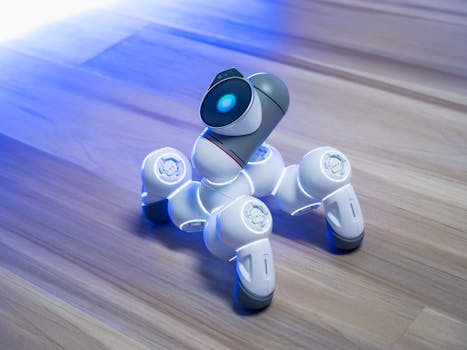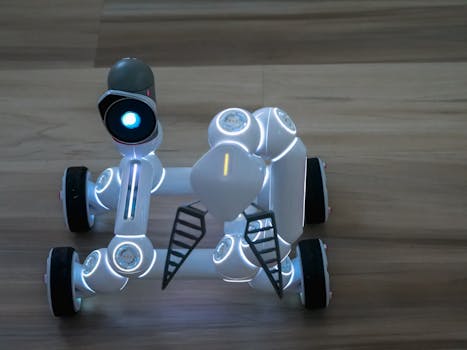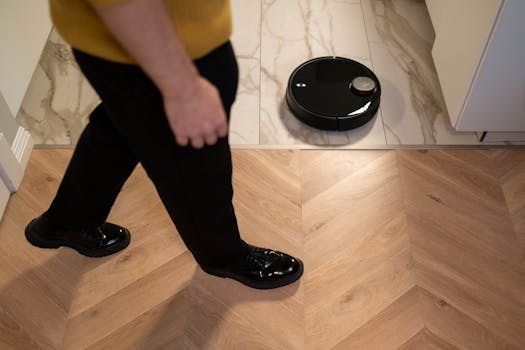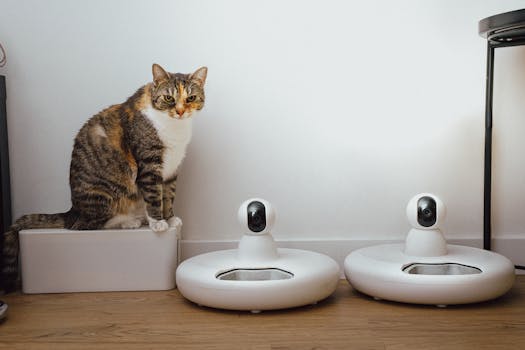Smart Homes 2025: The Rise of AI-Driven Devices
Smart Homes 2025: The Rise of AI-Driven Devices is revolutionizing the way we live and interact with our homes. With the increasing use of artificial intelligence (AI) and machine learning (ML), smart homes are becoming more efficient, convenient, and secure. In this article, we will explore the latest trends and advancements in smart home technology and how AI-driven devices are transforming the industry.
Introduction to Smart Homes

A smart home is a dwelling that incorporates various automated systems and devices to provide a comfortable, convenient, and secure living environment. Smart homes use a network of sensors, cameras, and other devices to monitor and control various aspects of the home, including lighting, temperature, security, and entertainment. With the help of AI-driven devices, smart homes can learn and adapt to the habits and preferences of the occupants, providing a personalized experience.
AI-Driven Devices in Smart Homes

AI-driven devices are the backbone of smart homes, enabling them to learn, adapt, and respond to the needs of the occupants. Some of the most common AI-driven devices used in smart homes include:
- Virtual Assistants: Virtual assistants like Amazon Alexa, Google Assistant, and Apple Siri are used to control various smart devices, play music, set reminders, and provide information.
- Smart Speakers: Smart speakers like Amazon Echo, Google Home, and Apple HomePod are used to play music, control smart devices, and provide information.
- Smart Thermostats: Smart thermostats like Nest and Ecobee are used to control the temperature and learn the habits of the occupants to optimize energy consumption.
- Smart Lighting: Smart lighting systems like Philips Hue and LIFX are used to control the lighting and create customized scenes and schedules.
- Smart Security Cameras: Smart security cameras like Nest Cam and Ring are used to monitor the home and provide alerts and notifications in case of any suspicious activity.
Benefits of AI-Driven Devices in Smart Homes

The use of AI-driven devices in smart homes provides numerous benefits, including:
- Convenience: AI-driven devices provide a convenient and hands-free way to control various smart devices and systems.
- Energy Efficiency: AI-driven devices can learn and adapt to the habits of the occupants to optimize energy consumption and reduce waste.
- Enhanced Security: AI-driven devices can monitor the home and provide alerts and notifications in case of any suspicious activity.
- Personalization: AI-driven devices can learn and adapt to the habits and preferences of the occupants to provide a personalized experience.
- Increased Property Value: Smart homes with AI-driven devices can increase the property value and appeal to potential buyers.
Challenges and Limitations of AI-Driven Devices in Smart Homes

While AI-driven devices have revolutionized the smart home industry, there are several challenges and limitations that need to be addressed, including:
- Privacy Concerns: The use of AI-driven devices raises concerns about data privacy and security.
- Compatibility Issues: Different smart devices and systems may not be compatible with each other, making it difficult to integrate them into a single smart home system.
- High Cost: The high cost of AI-driven devices and smart home systems can be a barrier to adoption for many homeowners.
- Lack of Standardization: The lack of standardization in the smart home industry can make it difficult to integrate different devices and systems.
Conclusion

In conclusion, Smart Homes 2025: The Rise of AI-Driven Devices is transforming the way we live and interact with our homes. With the increasing use of AI-driven devices, smart homes are becoming more efficient, convenient, and secure. While there are several challenges and limitations that need to be addressed, the benefits of AI-driven devices in smart homes cannot be denied. As the technology continues to evolve, we can expect to see even more innovative and exciting developments in the smart home industry.






